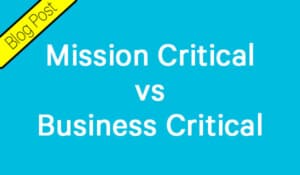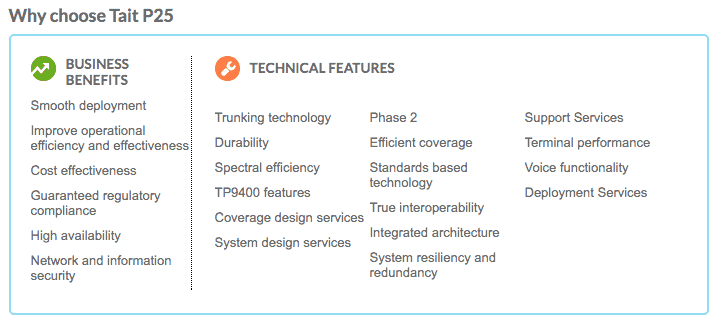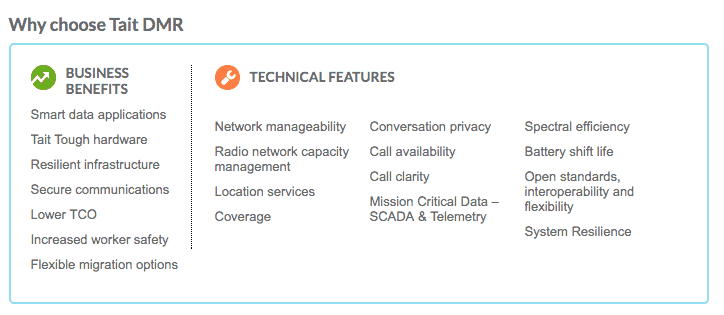 On our Tait Radio Academy LinkedIn group, one of our members asked:
On our Tait Radio Academy LinkedIn group, one of our members asked:
Is there a standard classification for systems as mission or business critical?
What are the criteria that determine such thing? Is DMR tier III mission critical?
ANSWER: The term “Mission” or “Business” does not change the meaning of the term “Critical.” It’s more about market designation rather than system performance and reliability.
Critical for Tait is more about the design approach we have for both the components of the system and the system as a whole.
The Tait architecture and design approach is common for both P25 Phase II and DMR Tier III Systems. Both support high availability options, and support design approaches that provides maximum resiliency and business continuity.
So from a critical communications aspect, we believe both are equally strong options. However, we also believe the interoperability of P25 is of great value to public safety customers while DMR Tier III and the ability to offer voice, location, short messaging and packet data over open interfaces is of great value to our industrial users.
As an example, in the public safety context, the ability to dynamically link police, fire and EMS communication systems means first responders no longer have to assemble on scene, share radios and plan before engaging, they can engage right away.
Once they are on scene, the dispatchers can use location information to reduce response times and dynamically assemble response teams communications and deliver response plans while en route. In this context, valuable minutes means saved lives. The principles of interoperability apply at the organizational level, the technology level and the user level. The results are powerful, and the simplicity of integrating commonality is difficult to improve on. Mission Critical reliability is paramount to realizing the full benefits of interoperability.
In the industrial context, particularly in utilities where much of the voice dispatching of work orders have been replaced. Open standards enable the same concept of inter-operability as P-25, at the enterprise level. Even with its diminished use, utilities still require full scale land mobile radio systems for critical operations and recovery activities.
DMR Tier III‘s capabilities enable not only the traditional voice dispatch services to coordinate dangerous field operations, its inherent packet data enables work order management systems to deliver work orders to mobile compute platforms automatically, taking advantage of the Mobile IP capabilities of the DMR platform.
In addition, SCADA and other industrial control systems can take advantage of under utilized communication system resources with fixed packet data services. Likewise, the availability of location information means utilities can reduce response times by identifying and dispatching the closest qualified service technician. Together, grid operations can monitor the grid, isolate faults, dispatch the nearest service technician using location information and mobile IP data and coordinate line operations through voice dispatch that keeps workers safe and the lights on.
The predictability afforded by open standards and the business critical reliability of the Tait design approach at both a component and system level enables our DMR systems to deliver increasing operational value through enterprise and operational convergence. We see Tait solutions as essential components of the business continuity and disaster recovery capabilities our customer depend on across industries.
To get updates as our posts get published, subscribe via email below:
Email Address





